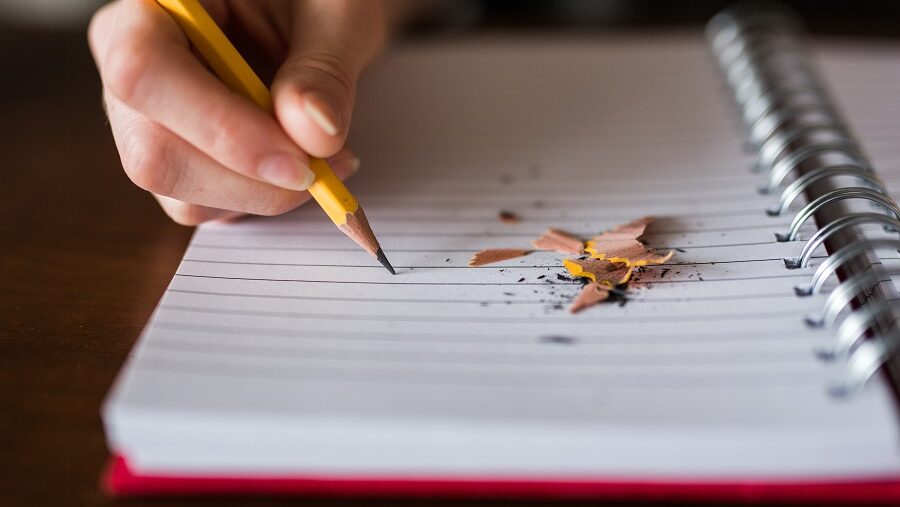
We see the explanation at the start of each new semester, but what does academic integrity really mean and, as online learners, what should each of us be doing to avoid plagiarism?
Of course you’re going to do your own work, but before you click that mouse button to close the window and move on, just hear me out for one moment more. Just “doing your own work” is not enough. Do you know that plagiarism can be completely unintentional? It is each student’s responsibility to ensure that all references—whether quoted directly or paraphrased—are properly credited to their original authors.
Bottom Line:
Failing to accurately and correctly cite and reference resources IS an act of plagiarism.
With the student’s permission, I would like to share a brief story with you. A few months ago, I got a call from another student who had been accused of committing plagiarism. He was shocked. He was offended. He was angry. He was absolutely certain that he had not committed this offense! Of course he had provided a complete list of references. Of course he had cited his work. I asked if he was absolutely sure. After taking a look at his submitted assignment, I had to call my conscientious, grade-obsessed friend to tell him that—technically speaking—the lack of quotation marks in his paper could constitute plagiarism.
Moral of the Story:
Proper formatting is critical in order to avoid plagiarism and maintain academic integrity.
Forget the quotation marks, the citation, or the source on a reference list and the charge of plagiarism could result in an academic integrity violation. Violations can bring about failed assignments, failed courses, and worse. The price tag for not being informed and conscientious about referencing the work of others can be extremely high and it can follow a student throughout their academic career.
So, for peace of mind, here are some practical suggestions that each of us can put into practice in order to ensure academic integrity:
- Understand the instructor’s formatting requirements. If necessary, clarify. Are you expected to use APA, MLA, Chicago? Each writing style presents a different set of formatting requirements.
- Don’t wait until the last minute to learn a new writing style. Writing style is more than just citations and references, but with the wide range of electronic resources available today, correctly formatting citations and references can seem complex and confusing. Throw in guidelines on structure and organization and the plot only thickens! Learn about the expectations before you start writing.
- Locate reliable and easy-to-understand resources. Reference guides are available at local bookstores and online, but be sure that the resources you select are trustworthy and current. The Penn State University Libraries site offers a variety of style guides, tutorials and other resources, so this needed information is readily available. Here are Quick Reference Guides for APA and MLA from Penn State York. Plus, Penn State’s Teaching and Learning with Technology site also offers students a variety of tutorials on plagiarism. Do yourself a favor and get educated!
- Model well-respected examples. Sometimes it is easier to interpret guidelines when you see them put into practice. Whether from the official style guide or from another available quality resource, find a few sample papers and use them to guide your own writing. As an example, our own Dr. Brandon Hunt’s APA Publication Manual (6th ed.) Paper Preparation Guide (2010). An MLA example paper is available from Purdue’s Online Writing Lab (OWL), a well-respected online resource.
- Be consistent. Formatting IS important, so pay attention and be consistent throughout an assignment as well as throughout the course.
- Learn the difference between paraphrasing and direct quotations. Not only should they probably be cited differently, but some writing styles or assignments will emphasize the use of one over the other. Also, the format for quoting long passages may not be the same as the format for a shorter quotation. Penn State University Libraries offers help on paraphrasing and Teaching and Learning with Technology provides this resource page on inappropriate paraphrasing.
- Take detailed notes. Indicate direct quotations, general ideas, summaries, and include all reference details in your resource notes. This is a crucial step in the writing process and it will help to prevent costly errors that plagiarism detecting software would later discover. Here are some simple note-taking guidelines from the Penn State Writing Center.
- Resist the urge to cut and paste! I cannot emphasize this enough. It may seem so much easier to cut and paste instead of typing or writing notes out in your own words, but this “shortcut” can come with disastrous consequences if, even by accident, that material ends up in your paper without being cited or cited correctly. It’s just not worth the risk.
- Discern resource quality. Before the Internet, we used to have to travel to a library to find reference resources. Not anymore. However, not all the information found online is worthy of becoming a support resource in our writing. Discern the credibility of a resource before deciding to let your grade depend on it. The Purdue OWL developed these guidelines for evaluating sources.
- Be cognizant of the amount of material that you’re using from outside sources. Remember that the point of using outside resources is to support your own viewpoint, not to communicate it entirely. Even if properly cited and referenced, a paper should contain more of your own thoughts than what is contributed by others. When processed through plagiarism detection software, a paper will receive an originality score in the form of a percentage based on the amount of material identified as already existing online. Therefore, one of the first things that the individual grading your paper will see is –% unoriginal. Food for thought…
I hope these tips help other students to avoid the unpleasant situation that my friend recently experienced. Trust me when I say that it is much easier to become informed and to put the time and effort into the assignment than to cope with the aftermath of a plagiarism accusation. Even if just one student benefits from this, it will have been worth it.
If you are already using other strategies, I would love to hear about them. Please feel free to share in the comment section.



